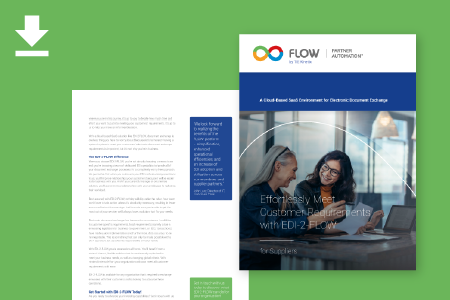January 15th, 2021
Vendor Managed Inventory (VMI) is a supply chain methodology that aims to create a dynamic relationship between a buyer and a vendor, or supplier, to ensure a smooth ordering process. It involves full transparency into inventory levels on both ends—buyer and vendor—and reverses traditional ordering operations by putting the vendor in the driver’s seat.
When a VMI program is implemented, the vendor has an up-to-date overview of the buyer’s inventory. Based on this, the vendor places orders on behalf of the buyer, ensuring timeliness and accuracy. A huge benefit here is that the vendor is able to take their own inventory levels into account when making decisions for the buyer. This minimizes the risk that either party will run out of stock when a certain product is needed and cuts down on excess for a more cost-efficient approach to inventory management.
VMI and EDI
Since VMI is often sold as a separate service from many providers, it’s common to view vendor managed inventory as a standalone offering—something that you have to purchase in addition to EDI services. That’s not necessarily the case.
The most important data required to run a successful VMI program is actually populated via EDI exchanges. Purchase orders (EDI 850), product activity data (EDI 852), advance shipping notices (EDI 856), and the like provide insight into the ordering process. All of this can be shared with vendors so that they can begin making inventory forecasts and replenish stock accordingly based on historical trends and buyer needs.
Next-Level VMI
With omnichannel retail becoming the new norm and the increasing popularity of B2B e-commerce, implementing a vendor managed inventory program in your supply chain can be especially useful. When a VMI approach is put into place as an extension of everyday EDI operations, a huge benefit is that the entire ordering process can be automated and executed in real time, further minimizing risk by taking human error out of the equation.
This sort of automation is a prime example of the capabilities of machine learning and artificial intelligence (AI). The result is a VMI system based on EDI exchanges that is continuously learning and adapting in response to changing business needs.




